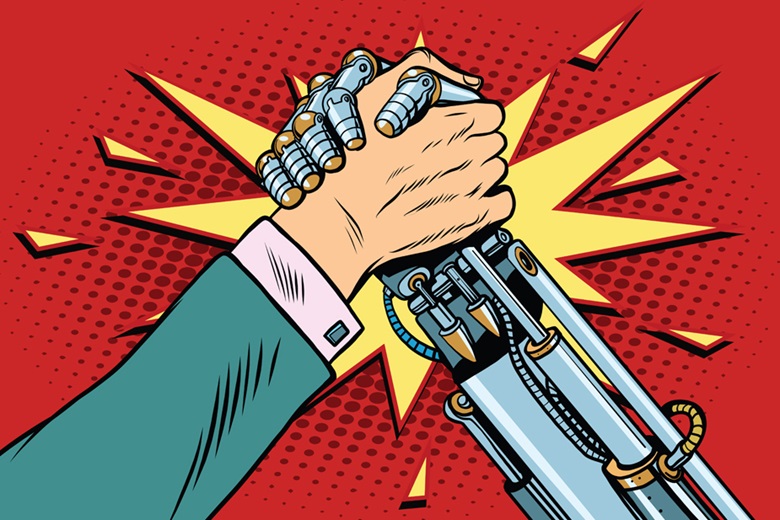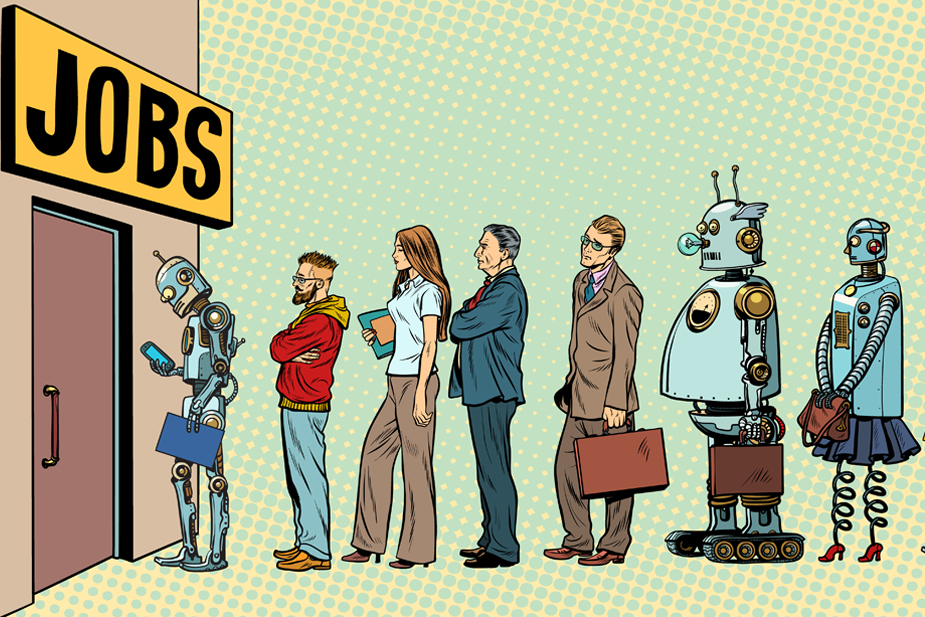COVID-19 altered the Future of Work

Industries are accelerating automation in response to the pandemic, putting more jobs at risk. We need to adapt.
As economies begin to ease their lockdowns and other restrictions, we will see businesses restart operations.
Cafes, restaurants and retail shops will soon reopen, as will other business. Public transport will again flow, travel will resume and gatherings will eventually become commonplace once more.
This may give many the impression that things are finally going back to how they were before the shut downs in movement and economic activity. This is likely not the case.
For one thing, as long as a vaccine has not been developed and effectively distributed, social distancing will continue in some form or another, either as hard policy, a strong recommendation by authorities, or just common sense.
Work, also, will not go back to normal. Its future was already a subject of intense discussion, and anxiety, long before the pandemic. The events of 2020 will alter it further.
Prior to COVID-19, the global economy had already entered a new era characterized by advances in artificial intelligence and machine learning, leading to technology that is very commonplace now but would have been called science fiction just a few years ago: the internet of things, autonomous hardware, software robotics and advanced data systems.
[Infographic: COVID-19 and the future of work]
In 2015, a term for all this newfangled tech and its effect on the way we work and live became popular: the Fourth Industrial Revolution (4IR). Like the first three industrial revolutions, 4IR is a mixed bag of both good news and bad.
Managed effectively, 4IR can help economies reach higher levels of productivity at lower cost while making entirely new industries and jobs possible. “Managed effectively” is the key term here because the benefits of 4IR for workers are not preordained.

COVID-19 hastens automation, says a new policy brief by the APEC Policy Support Unit and The Asia Foundation.
A defining characteristic of this revolution is the availability and prevalence of digital automation, which will definitely change, probably lower the demand for, and possibly even eliminate certain jobs. No doubt, a big part of our challenge is to mitigate these effects.
Many of the businesses that will survive COVID-19 would have taken measures to adopt to new social distancing norms. This means expediting their incorporation of Fourth Industrial Revolution principles and technology.
Before the pandemic, firms have already adopted automation to drive down labor and manufacturing costs as well as keep up with market innovation.
As a result of the pandemic, firms may turn to automation to reduce virus transmission risks to workers. Factory floors and offices alike will be reorganized to be less crowded. Businesses steeped in retail or hospitality will rely less on consumer-facing staff to provide service and more on digital applications.
If businesses do not put these changes to practice voluntarily, for the sake of the workers’ personal safety or as a protection from liability, they may do so to comply with new government-imposed social distancing guidelines, or, in some cases, to take advantage of governmental incentives for firms that go digital. There is also the likely reason of simply lowering costs, which automation tends to do, and cushion the impact of the downturn on the balance sheets.
[For more on this topic, download the policy brief: COVID-19, 4IR and the Future of Work]
There are few winners in this post-COVID-19 version of the Fourth Industrial Revolution. Unemployment in the APEC region is already expected to hit 81 million people in 2020—this is 23 million people more than 2019.
The conditions set by the pandemic also put certain workers at a disadvantage. The elderly and those vulnerable to health issues may retreat from the workforce altogether. This problem will only be exacerbated in economies where workers will be required to apply for immunity passports.
Women, often the victims of outdated cultural norms, will be disproportionately weighed down by these changes. For instance, the female workforce is traditionally tapped for front-facing service jobs that may be put in danger due to social distancing policies.
The disadvantage extends to even white collar professionals who will have to deal with both work-from-home and home-based-schooling arrangements. The hours that women will spend on household responsibilities and childcare will increase. This will hinder their productivity and may incentivize firms to automate occupations that have a high proportion of female employment. Only an idealist would expect the same to apply in equal proportion to men.
In the midst of everything, governments will also have to keep in mind that COVID-19 is first and foremost a health problem before it is an economic one. A lot of these challenges will not be solved by reversing social distancing policies. Reopening the economy will have to be done safely and responsibly.
At the top of list of the things policymakers will need to do is to ensure that the basic needs of households are at least being met, by expanding safety nets, for example, and setting up social protection floors.
Instead of trying to stem the tide of innovation, policy should also give workers the tools to take advantage of new opportunities in the digital economy through retraining and upskilling designed specifically for 4IR conditions. In a world where most tasks are accomplished with the press of a button, digital literacy, numeracy, creative problem solving and emotional intelligence will be increasingly in demand.
But automation is, of course, a complex phenomenon. Solutions will be more complex than what we can imagine in our capacity today. Governments, best in collaboration with other governments and with all stakeholders, should monitor trends in automation to ensure that these technologies benefit workers as much as businesses and that the 4IR future we end up in will be human centered, designed to the benefit of humans, instead of the bleak alternative.
#
Dr Hew is the director of the APEC Policy Support Unit, which produced a policy brief on this subject in collaboration with The Asia Foundation. Download “COVID-19, 4IR and the Future of Work,” by John Karr, Katherine Loh and Emmanuel A. San Andres.

